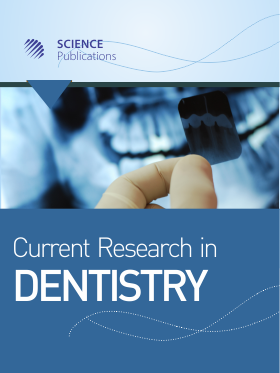Histopathology of Microbially Induced Corrosion and Cluster Failure of Moderately Rough Surface Oral Implants in a Resident Bone Microbiota
- 1 Independent Researcher, 29 Old Princess Hwy, Batemans Bay, NSW, Australia
- 2 Faculty of Medicine, Jinhua Institute of Zhejiang University, Jinhua, Zhejiang, China
- 3 Faculty of Medicine, Health and Human Sciences, Macquarie University, NSW, Australia
- 4 Independent Researcher, 7 Bayside Street, Broulee, NSW, Australia
Abstract
This case report presents as a maxillary "cluster-failure", where six moderately rough-surface oral implants (1-2 microns) were installed to support a full-arch hybrid bridge. Understanding cluster failures requires the acknowledgment of biofilm science that recognizes the persistence of bacterial infection in bone following extraction and the need to bioremediate the bone-bed, by surgical debridement, before implant installation. The patient, a 54-year-old, non-smoking, female sought full-arch implant rehabilitation following the extraction of teeth with chronic endo/periodontal disease. Approximately six years after the fitting of a 12-tooth titanium hybrid prosthesis, the patient presented with a prosthesis that was mobile. All six moderately rough surface implants, (4 etched and 2 anodized), presented with destructive cupping bone loss that resulted in 100% circumferential loss of all previously integrated threaded surfaces. Further, the implant surfaces were corroded and blackened. Histopathology of bone samples taken from the surrounding maxillary bone and implant surfaces showed necrotic bone with associated inflammation, in keeping with osteomyelitis. The bone marrow showed evidence of fibrosis with mixed inflammation comprising neutrophils, plasma cells, and lymphocytes, the degree of which was more pronounced in bone sampled from the anodized implant surfaces. This finding supports the definition of biomaterial failure provided in orthopedics, where biofilm infection of the implant surface is accompanied by chronic osteomyelitic (biofilm) infection of the adjacent bone. Planktonic bacterial cells cannot corrode metal surfaces, however, the cumulative activity of live bacterial biofilm phenotype communities are capable of degrading complex substrate surfaces by robbing electrons and altering metal surfaces-Microbially Influenced Corrosion (MIC). Corrosion of metal surfaces correlates directly with significantly increased adhesive potential with increased surface area in the micrometer range, increasing bacterial biomass and pathogen adhesion for rough versus smooth surfaces. Increasing the surface roughness encourages bacterial adhesion, immunomodulation, quorum sensing, relapse infection, and the potential degradation of biotic and abiotic surfaces. Increasing biomaterial surface roughness also conflicts with the fundamental understanding of biofilm science which mandates the need to prevent or inhibit bacterial adhesion. Smooth and uniform (cell-like) surfaces evade pathogen adhesion and are accessible to cell-surface microfluid flow which prevents the adhesive retention and accumulation of autoinducers, which facilitate cell-to-cell communication quorum sensing and biofilm-mediated relapse infection.
DOI: https://doi.org/10.3844/crdsp.2024.1.7

- 6,351 Views
- 2,383 Downloads
- 0 Citations
Download
Keywords
- Microbially Influenced Corrosion
- Resident Human Jawbone Microbiome
- Moderately Roughened Dental Implants
- Cluster Implant Failure
- Destructive Bone Loss
